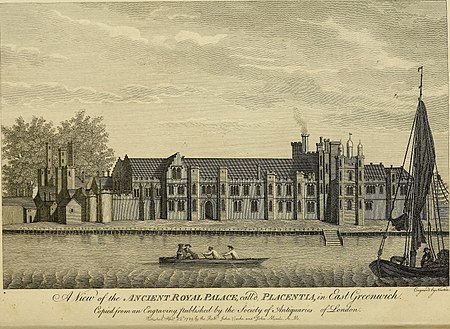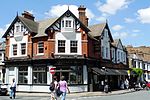Palace of Placentia

The Palace of Placentia, also known as Greenwich Palace, was an English royal residence that was initially built by Humphrey, Duke of Gloucester, in 1443. It was located at Greenwich on the bank of the River Thames, downstream from London. The original residence was extensively rebuilt around 1500 by Henry VII. A detached residence the Queen's House was built on the estate in the early 1600s and still survives. In 1660, the main palace was demolished by Charles II to make way for a proposed new palace, which was never constructed. Nearly forty years later, the Greenwich Hospital (now called the Old Royal Naval College) was built on the site.
Excerpt from the Wikipedia article Palace of Placentia (License: CC BY-SA 3.0, Authors, Images).Palace of Placentia
King William Walk, London East Greenwich (Royal Borough of Greenwich)
Geographical coordinates (GPS) Address Website Nearby Places Show on map
Geographical coordinates (GPS)
| Latitude | Longitude |
|---|---|
| N 51.482222222222 ° | E -0.0066666666666667 ° |
Address
Old Royal Naval College
King William Walk
SE10 9HX London, East Greenwich (Royal Borough of Greenwich)
England, United Kingdom
Open on Google Maps








